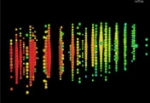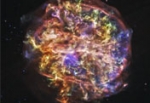We study various topics in Theoretical Astrophysics, with a focus on High-Energy and Particle Astrophysics. Our goal is to understand the physical processes governing the observed astrophysical phenomena, in particular at high energies.
Cosmic-rays are high energy particles produced by astrophysical objects. Their spectrum extends from few to 1011 GeV per particle. We suspect that the higheset energy particles are protons produced by black holes, that accrete mass at a rapid rate. However, the theory is incomplete and we have no direct experimental indentification of the sources.
The universe exhibits a wide range of explosive phenomena, from the supernova explosions of massive stars to gamma-ray bursts that outshine the observed universe for a few seconds every day. Our theoretical understanding of all these explosion classes is largely phenomenological and incomplete.
ULTRASAT is a scientific mini-satellite carrying a telescope with an unprecedentedly large field of view observing in the ultraviolet. Its launch to geostationary orbit (GEO) is planned for 2023. ULTRASAT will revolutionize our understanding of the hot transient universe: the extra-Galactic volume, that will be accessible to ULTRASAT for the discovery of transient sources, is 300 times larger than that of the most sensitive UV satellite to date, GALEX, and comparable to that of the largest ground-based optical transient survey planned to begin operation in 2022, LSST.





